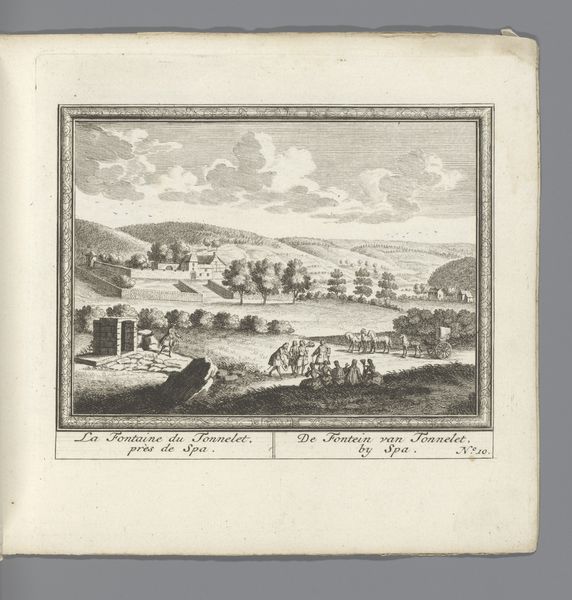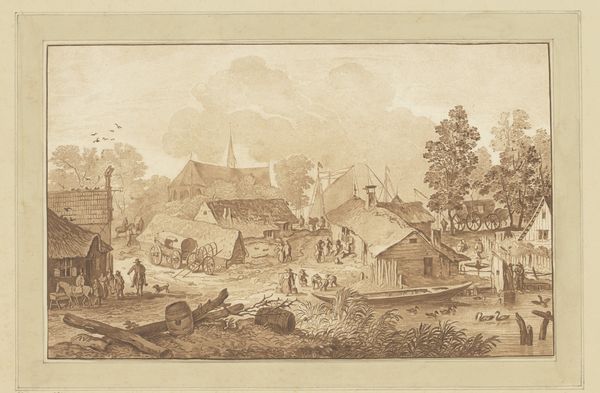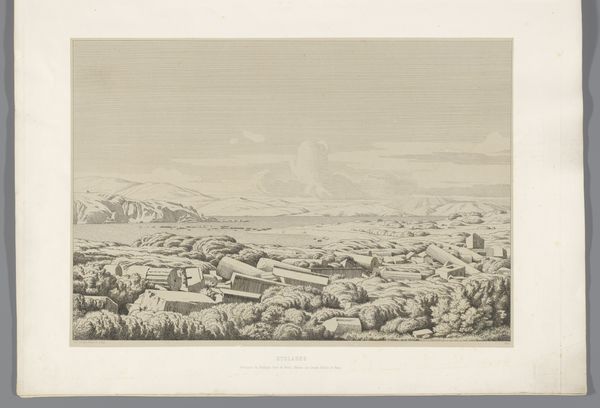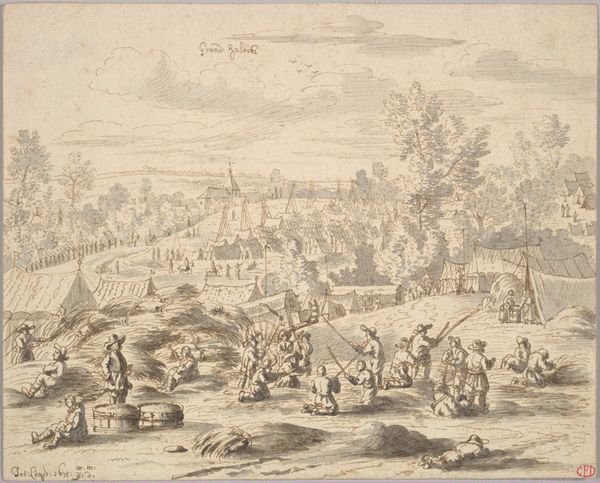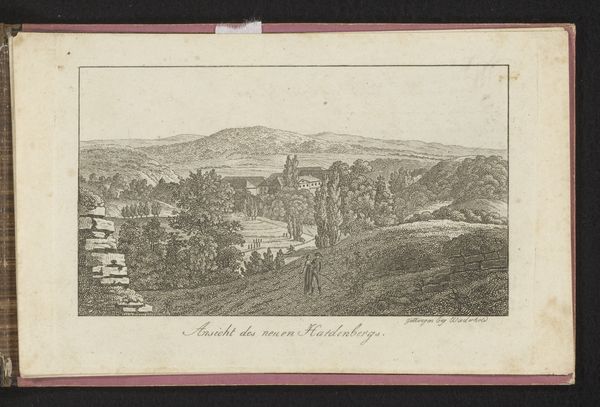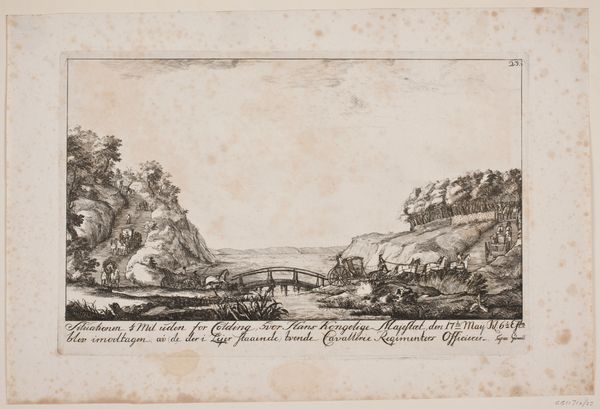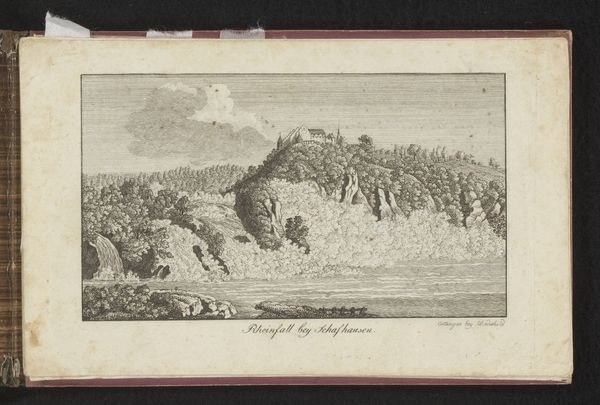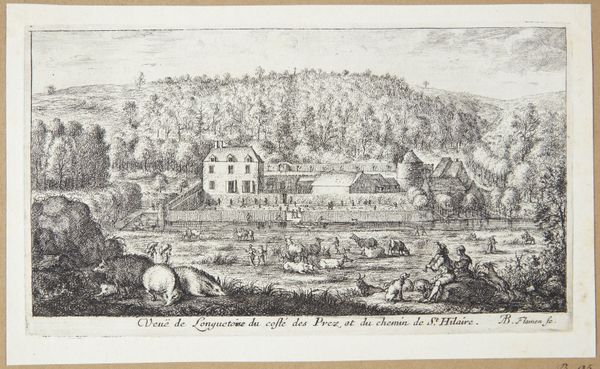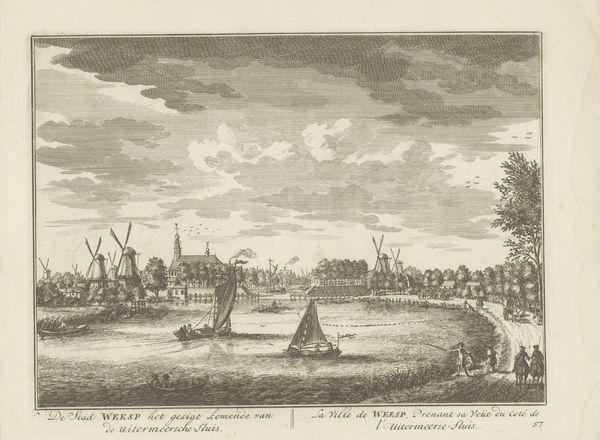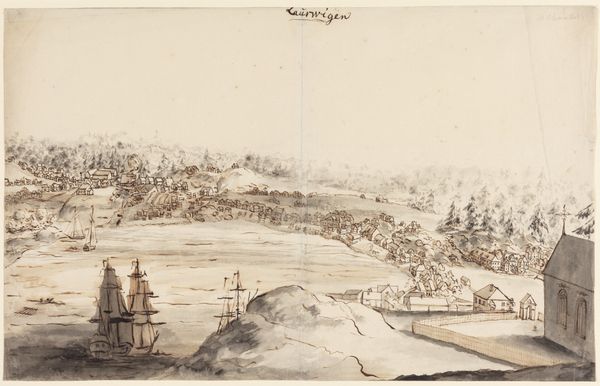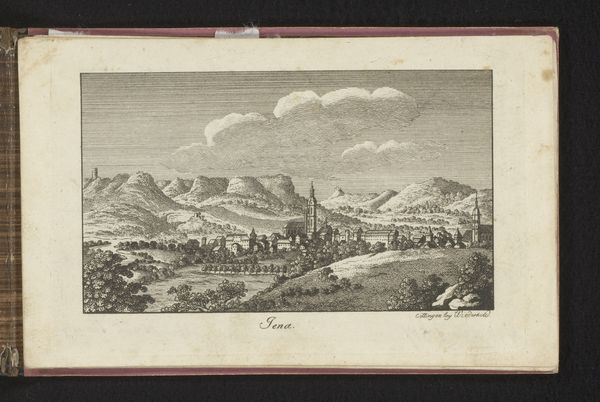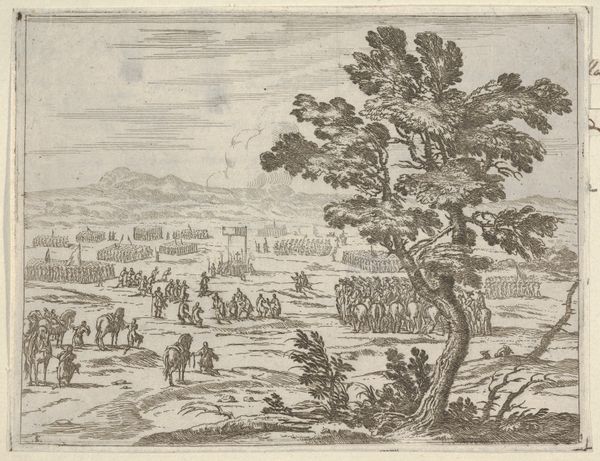
drawing, print, etching, ink, engraving
#
drawing
#
neoclacissism
# print
#
etching
#
landscape
#
ink
#
coloured pencil
#
engraving
Dimensions: height 96 mm, width 160 mm
Copyright: Rijks Museum: Open Domain
Curator: Let’s discuss "Gezicht op Kassel," an anonymous etching and engraving, possibly created between 1770 and 1818, rendered in ink on paper. Editor: Initially, it feels almost like a stage set; there's a distinct foreground and backdrop. A very deliberate arrangement. Curator: Yes, notice how the linear perspective leads your eye from the grazing animals towards the distant city? The composition is divided into distinct registers, the landscape with livestock providing a pastoral counterpoint to the urban architecture beyond. Editor: What’s fascinating to me is the interplay of rural tranquility versus urban ascendancy, literally built upon layers of meaning, I think. Is the Kassel represented a cultural power symbol? The towering spires certainly infer power and status. Curator: The engraving style, with its precise, clean lines, lends a sense of order and clarity. Each element is carefully delineated, revealing a methodical approach to representation, notice also the high contrast ratios. The lines almost vibrate to reveal texture, especially when they're densely applied, such as in the area indicating the foliage of the trees. Editor: Those stark contrasts! That could even imply the sociopolitical dynamics of the time. What about the inclusion of domestic animals? Are we to view the relationship of humanity's intervention in this ecosystem and environment through them? Perhaps suggesting an innocent ignorance on our part regarding the exploitation of resources? Curator: It also employs a certain restraint in its detail—there’s a preference for structure and form, quite Neoclassical. Editor: For me, this work evokes an idyllic memory, tinged with an unsettling awareness. It serves as both historical record and symbolic tableau, encouraging viewers to consider their relationship with environment and social frameworks. Curator: An astute point. Indeed, I concur with the potential layers it has to offer regarding its historical position, it might provide us a lens through which we consider the evolution and shift in art over that particular century. Editor: Yes. I hadn't thought of it that way! Thanks to formal construction, it has led us somewhere we both felt very easily drawn toward with thoughtful intrigue.
Comments
No comments
Be the first to comment and join the conversation on the ultimate creative platform.
